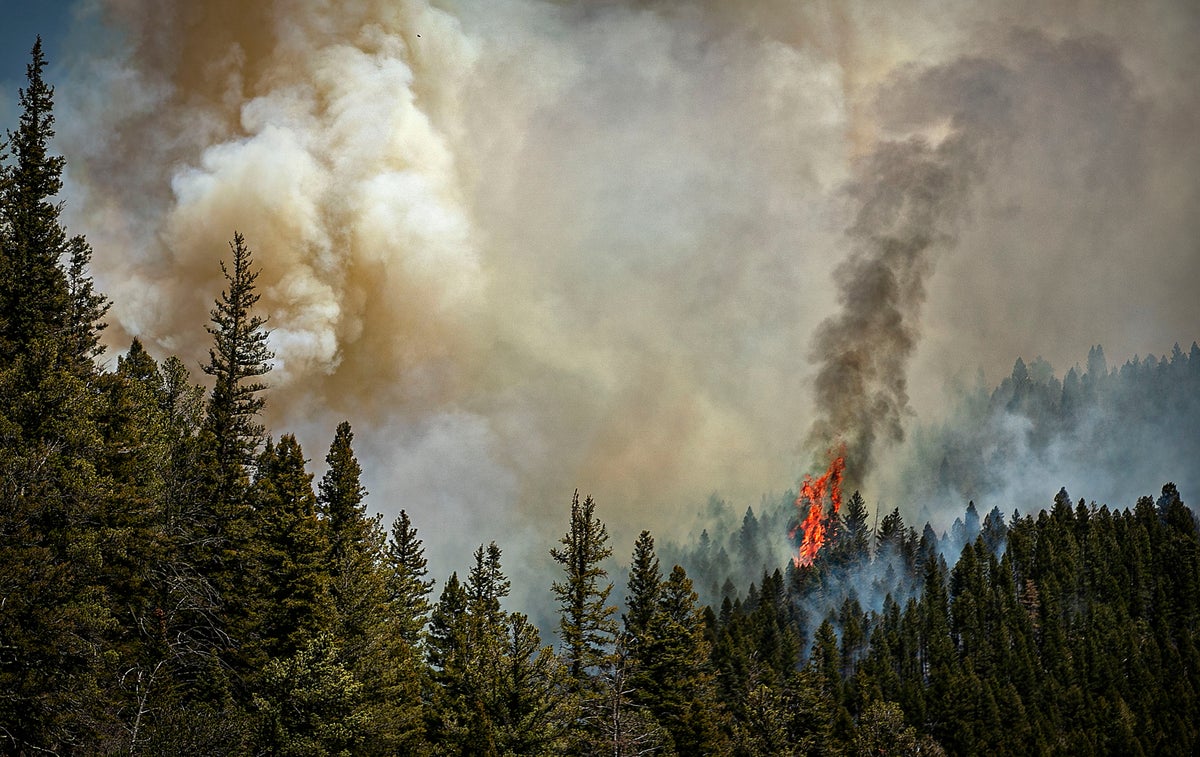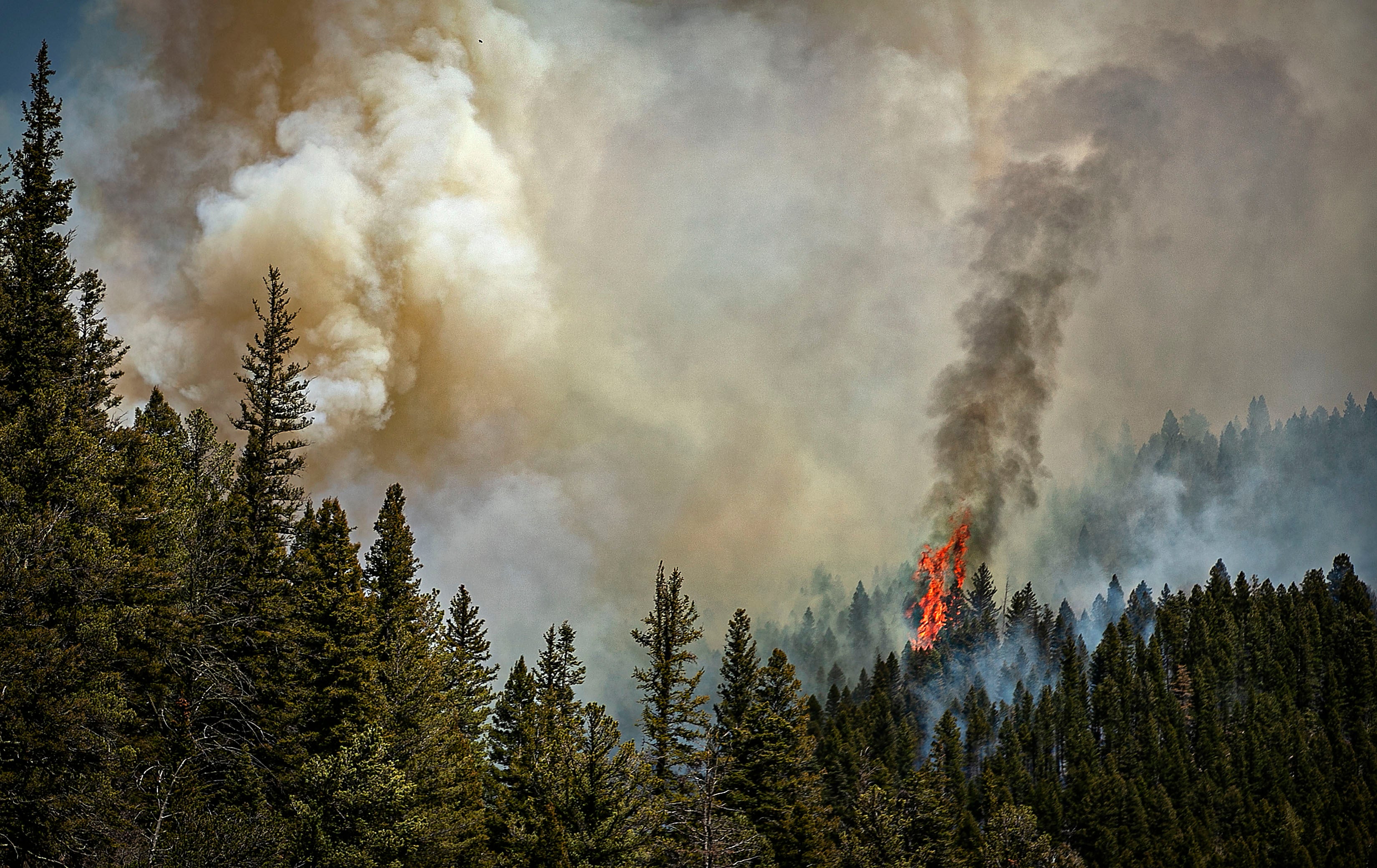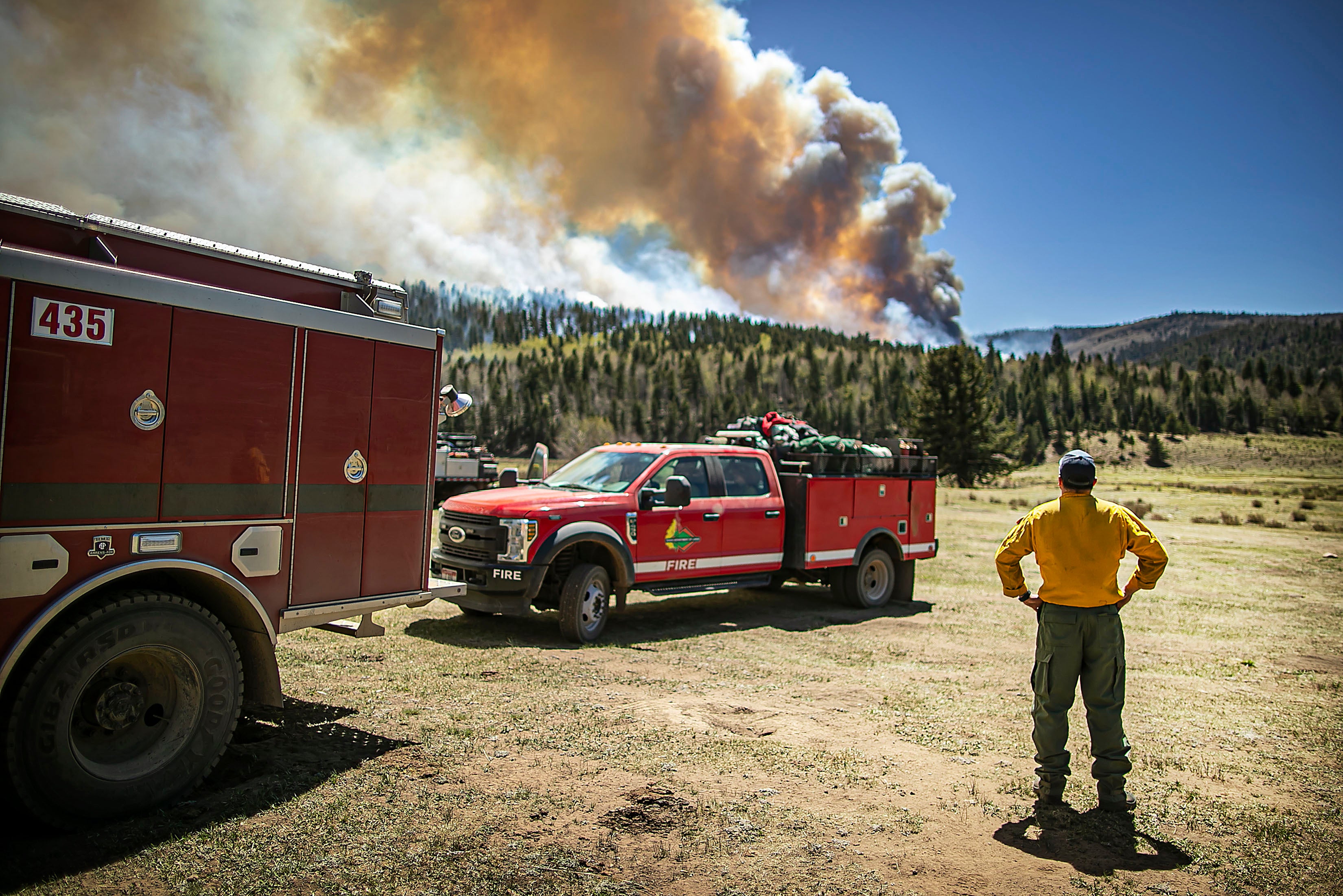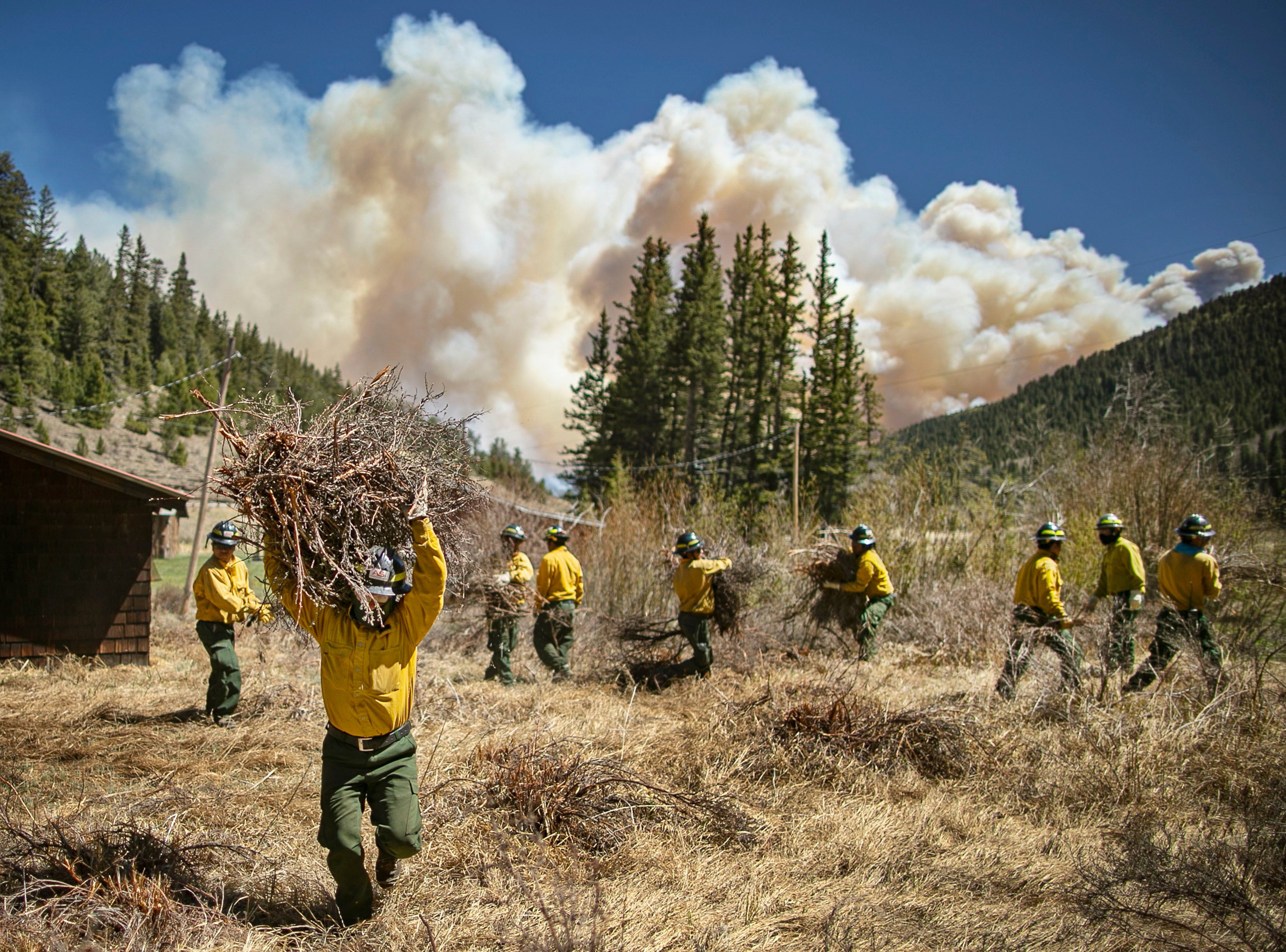
One of the two blazes in New Mexico that combined to become the largest wildfire in the state was started by the US Forest Service (USFS), the agency has admitted.
USFS said on Friday that the Calf Canyon fire started from a planned burn it set over the winter, but turned into a “sleeper fire,” that continued to smolder unnoticed.
It said the Calf Canyon Fire was caused by a “burn pile” of branches which the agency thought had burned out by 9 April, but later reignited ten days later on April 19 and escaped containment lines.
Then on April 22, the agency said a “wind event” led to the fire spreading significantly and the Calf Canyon Fire merging with the Hermits Peak Fire, which was reportedly also caused by an escaped planned burn.


The two blazes combined to torch over 312,320 acres (1263 square km) of mountain forests and valleys – nearly the size of greater London, destroying hundreds of homes.
“Forest Service fire investigators have determined that the Calf Canyon Fire on the Pecos/Las Vegas Ranger District of the Santa Fe National Forest (SFNF) was caused by a pile burn holdover from January that remained dormant under the surface through three winter snow events before reemerging in April,” the agency noted in a statement.
New Mexico Governor Michelle Lujan Grisham said in a statement that the pain and suffering caused by the actions of the USFS “unfathomable.”
The wildfire has reportedly destroyed forests used for centuries by Native American communities.
“I appreciate the U.S. Forest Service assuming responsibility for the actions that caused this terrible crisis. It is evident that the federal government must take a hard look at their fire management practices and make sure they account for a rapidly changing climate,” Ms Grisham said in a series of tweets.
Planned burns have been recommended by some experts as a method backed by science to clear away dry vegetation and prevent catastrophic wildfires.

Indigenous groups also have a long history of using intentional fire to create controlled burns to reduce the risk of wildfires.
However, experts, including those at Nasa, say longer wildfire season, as well as extreme heat and dry weather aggravated by climate change, make it more difficult to use intentional fires as a preventive method.
“The Santa Fe National Forest is 100 percent focused on suppressing these fires with the support of the Type 1 incident management teams who are fully prepared to manage complex, all-risk situations,” SFNF Supervisor Debbie Cress said in a statement.
“Our commitment is to manage the public lands entrusted to us by improving the forest’s resilience to the many stressors they are facing, including larger, hotter wildfires, historic levels of drought, rising temperatures, and insects and disease,” she added.







